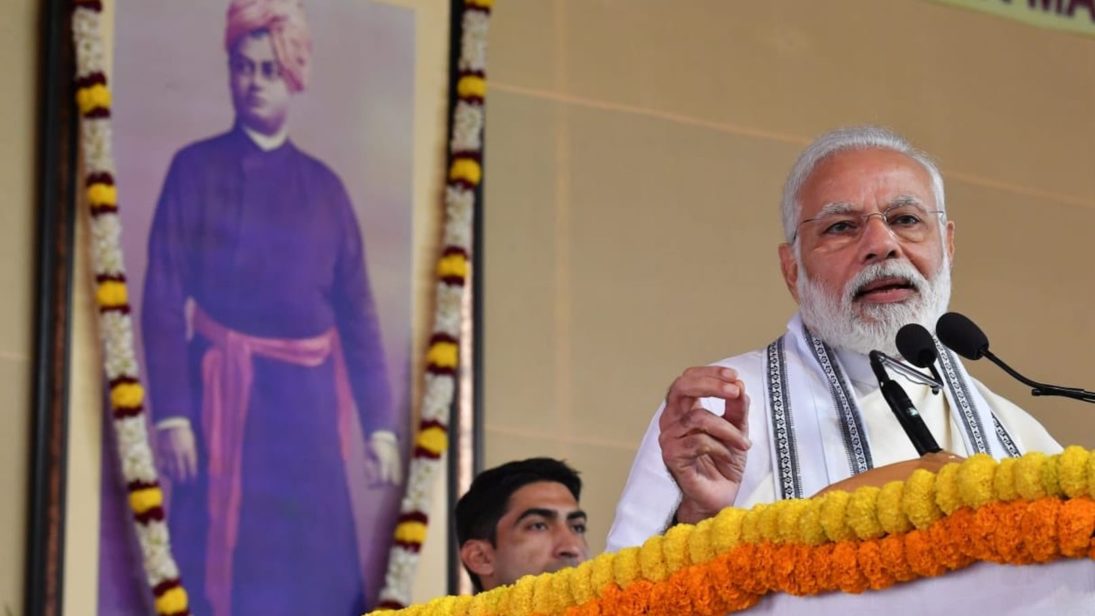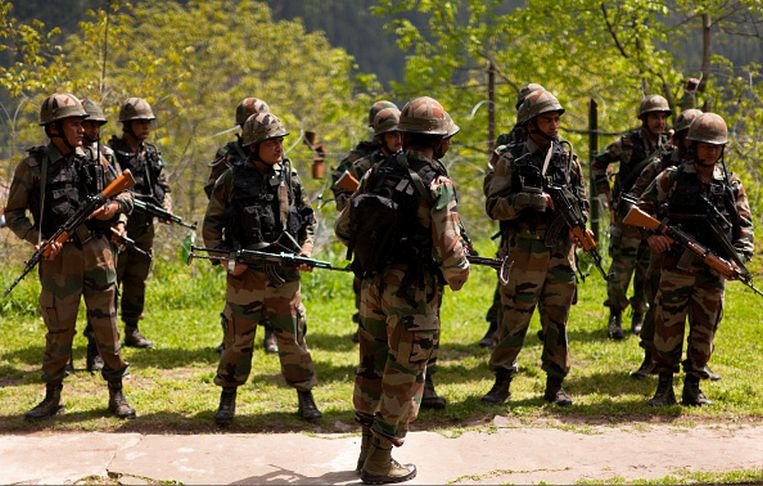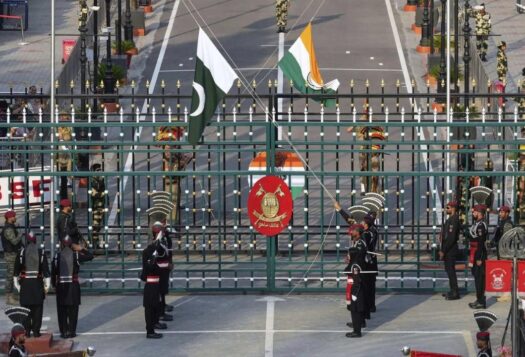
Since 2014, India’s security and foreign policy thinking on Pakistan has been characterized by a singular motif: changing the script to change the narrative. This rests on New Delhi’s ability to challenge fundamental assumptions about the bilateral security dilemma as fait accompli. Its defining feature is greater political and military risk-taking to coerce behavioral change in Islamabad and Rawalpindi. Has it succeeded?
This article will contextualize elements of this relatively new Indian signaling playbook—whose origins coincide with the beginning of Prime Minister Narendra Modi’s first term—in the 2019 Pulwama-Balakot episode, the developments leading up to it, and its aftermath.
What Has Changed
There are at least seven elements to the Modi government’s new(ish) script on Pakistan.
- A display of the disposition towards “muscular” policy options. This is exhibited in India’s military choices; political statements that explicitly name and shame Pakistan for state sponsorship of terrorism; and the effective abrogation of Article 370 of the Indian Constitution. Through its decision on Kashmir’s erstwhile special status, New Delhi has, among other things, sought to declare Jammu and Kashmir (J&K) an “integral part of India,” and shift focus, particularly in bilateral negotiations, to future Indian jurisdiction over Pakistan-Administered Kashmir (PAK).
- The willingness to escalate militarily in response to acts of cross-border terrorism claimed by groups based in Pakistan. Testing the country’s nuclear thresholds falls within this same category. Together, they could introduce further ambiguity in South Asian conventional and nuclear deterrence.
- Deterring Pakistan from further escalation in a conflict by framing India’s military response as “pre-emptive action” against anticipated cross-border terrorism, as clarified in Foreign Secretary Vijay Gokhale’s statement after the Balakot strike.
- On the subject of language, this government has evinced an interest in acrobatic wordplay to rationalize its actions. For example, the targeting of terrorist infrastructure in Balakot was explained as a “non-military” move aimed at a non-state actor, and not the state or its citizens.
- Continue increasing international diplomatic momentum to isolate Pakistan by calling attention to its sponsorship of terrorism.
- Punish or impose “costs” to compel a Pakistani re-consideration of its use of asymmetric terror as state strategy.
- Use the opportunities provided by the success of India’s Pakistan script to de-hyphenate the bilateral relationship, and give greater impetus to its global power ambitions.
This tool kit is intended as a demonstrator of political intent, a proactive military disposition, and resolve to retaliate through greater risk-taking. It serves another important purpose, which is to signal departure from past policy—a disavowal perhaps of India’s so-called “strategic restraint.”
Whether India has been able to change the narrative with, and on, Pakistan depends on the success of the script in practice, as a process of action-reaction.
How Much Can India Bench? The Military Muscle Test
Since 2015, India has publicly proclaimed a series of progressively escalatory conventional responses to incidents of cross-border terrorism. The Gurdaspur incident in 2015, 2016 attack on an air force base in Pathankot, and later in the same year, the attack on an army base in Uri, resulted in the Indian ground-based surgical strikes against militant launch pads across the Line of Control (LoC) in PAK.
In 2019, after the Pulwama attack, the Indian Air Force (IAF) ventured beyond PAK to target terror infrastructure in Balakot. This was a watershed moment—it was the first time the IAF crossed into sovereign Pakistan territory since the 1971 war. By the same benchmark, this episode provides the most instructive illustration so far of the Modi government’s script on Pakistan.
In terms of a military evaluation, certainly, this was a demonstrator of the likelihood of both a limited aerial confrontation and also de-escalation to prevent spiraling to nuclear use in circumstances that cannot be fully predicted or gamed—as shown by both sides. This was evident in Gokhale’s statement after the Balakot strike, and in Pakistani Prime Minister Imran Khan’s speech following Pakistan’s incursion into Indian airspace. IAF Wing Commander Abhinandan Varthaman’s unexpected capture and subsequent release by Pakistan also factors into this de-escalation matrix. There is no certainty however whether such off-ramps will be available in future scenarios.
While India may have successfully signaled its retaliation ability, an equally convincing argument about imposing costs on or punishing Pakistan to coerce a reconsideration of its proxy terror strategy cannot be made.
While India may have successfully signaled its retaliation ability, an equally convincing argument about imposing costs on or punishing Pakistan to coerce a reconsideration of its proxy terror strategy cannot be made. In the big picture, the Balakot episode may come to be seen as an important but small blip that may have sent a new message—of the possibility of conventional Indian retaliation—but there is nothing to prove or disprove that it succeeded in changing the variable of cross-border terrorism. Ultimately, this was just one episode, the costs for Pakistan were not unacceptable, and the gains for India were mostly short-lived.
India was also not able to establish escalation dominance or control, as seen quite immediately in Pakistan’s incursion beyond the LoC following India’s operation in Balakot. Similar Pakistani retaliation, even if tending towards de-escalation as in Balakot, can be anticipated in a future eventuality. An important point to note here is that using limited air strikes on Pakistani territory has been a long-time contingency plan, with thinking on the subject having emerged particularly after the 1999 Kargil conflict. Military-planners at the time expected Pakistani retaliation to be immediate, with possible escalation to war.1
Evidence also points to surgical strike-like actions being undertaken under previous governments. The difference lies in earlier decisions to keep these actions covert, as opposed to their more recent public confirmations. Publicity helps the cause of signaling a change in script, such as claims of taking bolder risks with Pakistan. At the same time, the much larger audience—and this includes expectations of a bigger and better response when domestic politics and foreign policy are so closely conflated—could also have negative consequences, with limited options available for next steps and the possibility of decision-makers’ hands being forced by precedent.

Do You Even Flex? The Political Muscle Test
The answer to this is yes—plenty.
India’s political and diplomatic flexing ties back to broader trends in challenging assumptions about India’s crisis behavior. In fact, “befitting reply” or “muh tod jawab” is the one phrase that has consistently featured in most political statements proscribing Pakistan for sustaining terrorism against India. Public observations, particularly about the nature of India’s nuclear doctrine, have also characterized the period beginning in 2014. India’s interest in talking about a subject which previous governments have been reluctant to discuss publicly was first contained in the 2014 BJP election manifesto, which spoke of a review, and possible revision, of India’s nuclear doctrine.
Although this was later clarified as a non-starter by Modi after he became prime minister, several other remarks by those occupying important seats within government have followed since. One of the earliest was National Security Adviser Ajit Doval’s speech at the Munich Security Conference’s core group meeting in Delhi in 2014, where he spoke of India’s “credible deterrence” rather than India’s historic position of credible minimum deterrence. Later, in 2016, then-Defence Minister Manohar Parrikar shared his personal opinion on the NFU on a public platform, and in 2019, current Defence Minister Rajnath Singh’s also ventured a set of observations on the subject.
In a speech laying out India’s policy fundamentals, Minister of External Affairs S. Jaishankar noted that “a low-risk foreign policy is only likely to produce limited rewards.” This remark is the clearest indication yet of the new trajectory New Delhi has sought to pursue with regard to Pakistan. The diplomatic offensive to isolate Pakistan internationally and on multilateral platforms mirrors this line of thinking. India’s diplomatic overtures and political statements have essentially mainstreamed the approach of risk-taking, whether it was Modi’s suggestion in 2016 referencing the Indus Water Treaty (IWT) that “blood and water can’t flow together at the same time” or the 2019 announcement that India was giving “full freedom” to security forces to respond after Pulwama.
Diplomatically, there was a surprisingly muted international response to Balakot—India did, after all, breach sovereign Pakistani territory. This owed in large part to India swiftly reaching out to foreign governments to explain its position, and clarify that the actions were in self-defense against terrorism. The success of this episode may have encouraged some hope in New Delhi that de-hyphenation from Pakistan would be possible. However, in the long-run, a recurring public focus on Pakistan, and as a result, inflammatory public opinion and media coverage, could instead lead to a further entrenchment of the India-Pakistan hyphenation.
Ultimately, India’s choices have important consequences for signaling, whose varied interpretations could have both intended and unintended effects. An intended consequence is the injection of ambiguity in anticipated Indian responses to future incidents of irregular warfare.
Overall, these instances of challenging fundamental assumptions about India’s Pakistan policy have led to analyses that have ranged from discerning an actual shift, to its dismissal, as not amounting to any real change on the ground. Much has since been written on the subject, with considered but divergent interpretations, whether they argue that it is much ado about nothing, or India successfully calling Pakistan’s nuclear bluff.
Ultimately, India’s choices have important consequences for signaling, whose varied interpretations could have both intended and unintended effects. An intended consequence is the injection of ambiguity in anticipated Indian responses to future incidents of irregular warfare. One way to evaluate the trade-offs from India’s perspective is that risk-taking, whether in word or deed, could push Pakistan to further expend limited resources and split dependence on both conventional and nuclear capabilities, driving the country to “eat grass.” This could potentially contribute to a widening of economic—and therefore national strength—gaps between the two countries, and diminish nuclear parity, which would play to a conventionally superior India’s favor.
However, the foundational stumbling block in the bilateral security dilemma is one of perspective and psychology. India’s emphasis on ambiguity about its nuclear posture and future military action will have little to no impact on Pakistan’s decision-making if the latter does not take these declared positions seriously in the long-term. For a threat to be credible, an adversary has to see both political resolve and military capability as legitimate. As it is, there appears to be a mismatch between India’s defense capability and its purported intentions.
If Pakistan continues to find its own threat perceptions unaddressed—or amplified—it is only likely to continue, if not intensify, the strategy it has historically gained most dividend from. The surge in ceasefire violations across the LoC since Balakot and the August 2019 decision on Article 370 bear testimony to this assertion. Further, if Pakistan chooses to justify its own destabilizing actions by projecting the revocation of Kashmir’s special status as India’s invalidation of the 1972 Simla Agreement, it could set in motion several threats to the sanctity, thin as it is, of the mutually agreed principles guiding the bilateral relationship.
Has Changing the Script Worked?
On Pakistan, the current Indian government has demonstrated clear divergences in signaling from the United Progressive Alliance-era. This appears to have been precipitated chiefly by the view that the Prime Minister Manmohan Singh-led government did little—or nothing—to address the country’s security dilemma with Pakistan.
The divergences in signaling are best encapsulated by the combination of political statements, diplomatic steps, and military choices this government has made in support of its risk-taking approach. Cumulatively, they show that the Modi government’s script on Pakistan, after the early enthusiasm for bilateral bonhomie, has changed. However, there is a lack of evidence to suggest that it has successfully transformed the narrative on India’s crisis-time behavior—certainly not to the extent of coercing a course of Pakistani action that is favorable to New Delhi.
An examination of the events leading up to the Balakot strike, the strike itself, and its aftermath, suggest that uncertain expectations about Indian retaliation to cross-border terrorism is a smart strategy as compared to the predictability of a stock response (or no response). However, this ambiguity can also have unintended negative consequences, from India-Pakistan re-hyphenation to emboldened Pakistani manipulation of sub-conventional conflict in the nuclear shadow. In any case, in future scenarios, much of India’s decision-making, as with Balakot, will likely depend on the domestic political environment, leadership orientation, and the international context.
Pakistani behavioral modification can be brought to bear in two ways: coercion through the imposition of unacceptable diplomatic and military costs, or finding a way to mutually mitigate threat perceptions. In an environment of greater risk-taking by India, and a very likely immovable Pakistan, confidence-building talks may be theoretically useful, but there will be no political appetite for them—nor public opinion in their favor.
Unless India is able to implement a long-term strategy with a built-in hedging mechanism to address cross-border terrorism, inadvertent collaterals and bilateral perception gaps will diminish the impact of even short-term gains. At best, this will keep the status quo intact; at worst, it will contribute to more security instability in South Asia.
***
Image 1: Narendra Modi via Twitter


